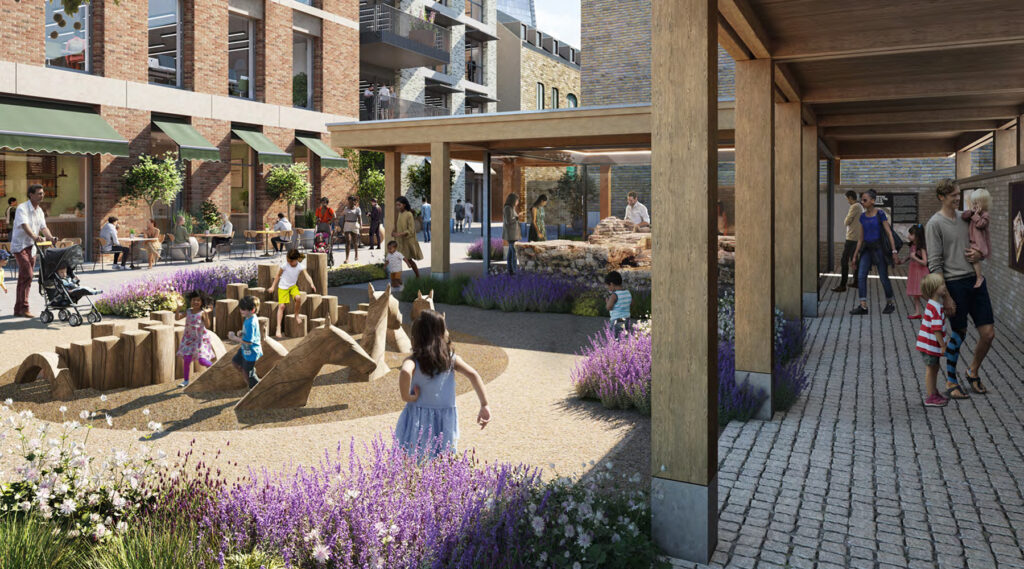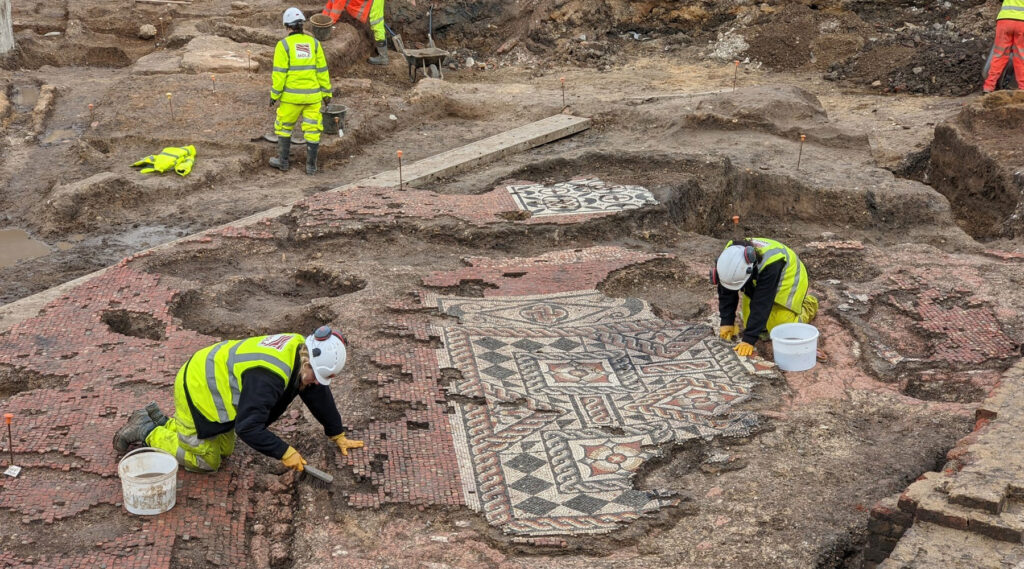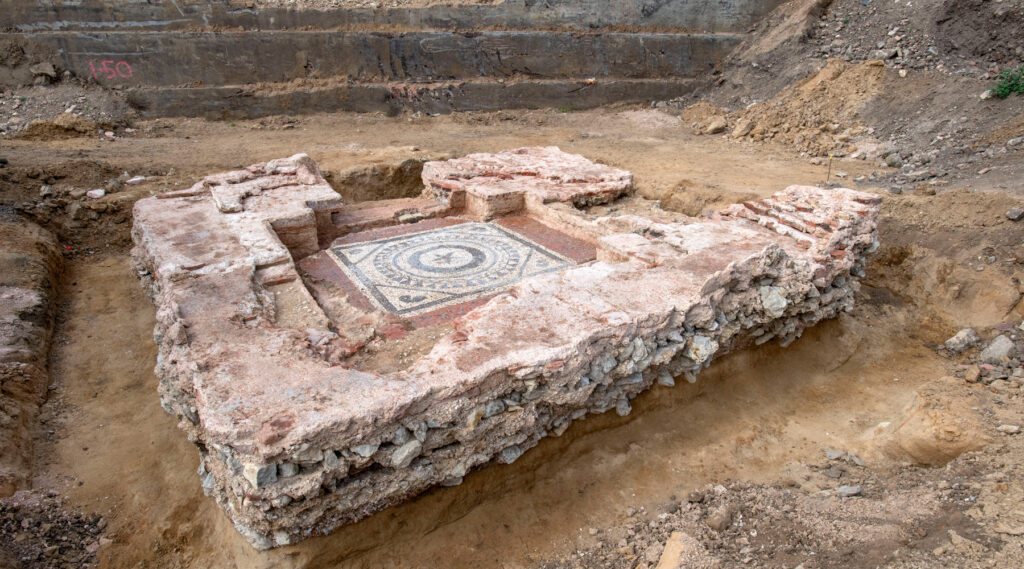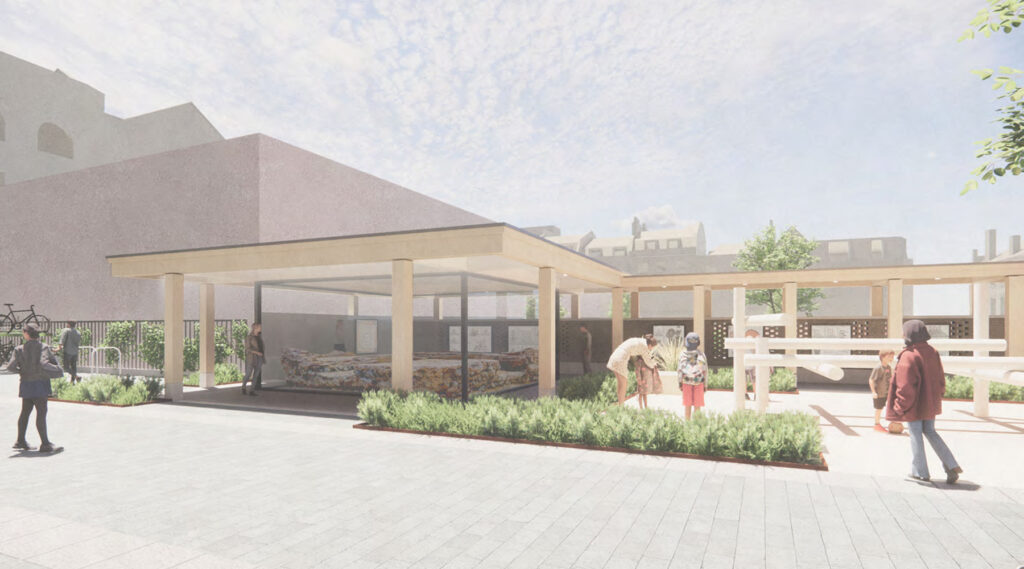One of the UK’s most important discoveries of Roman heritage in recent years is to go on public display in Southwark, close to where it was uncovered last year.
The mosaic was uncovered during site clearance of land previously used as a Jubilee line extension construction site close to London Bridge station and is now being developed for housing. The mosaic and the announcement earlier this year of the discovery of a Roman mausoleum on the same site make this part of Southwark one of the most important sites for Roman archaeology in the past 50 years.
The Liberty of Southwark Mausoleum and its associated mosaics are now considered to be of national significance as an extremely well-preserved example of a Romano-British funerary structure of a rare form unparalleled in Britain.
Often in the past, any discovery of this significance would see the objects removed to a museum, but modern thinking is that such objects should be displayed where they are discovered, bringing heritage closer to the people, and especially to people who might not visit a museum.
Due to their location in the building site and the need to stabilise the mosaics, the Roman structures were lifted from the site last year and sent to Museum of London Archaeology (MOLA) for conservation, with the hope that they would also be returned to their place of discovery.
The property developer has now outlined their plans to put the mosaics on display.
The mosaics, along with the remains of the mausoleum and some of the thousands of artefacts recovered during the excavation, will form the core of a display in an Archaeological Pavilion that will tell the story of past lives on this historic site.
The intention is that the Mausoleum will be reconstructed in a new open yard area within the development and next to the Crossbones Burial Ground. The outline of the wall foundations and buttresses will be marked out at ground level, and within this, the central chamber will be reassembled and protected by a glass wall within the pavilion structure.
One of the large mosaics will be re-installed within the pavilion, with another displayed nearby.
The design, as a pavilion, means that the display will always be open, and not subject to opening hours or other complications for visitors. There’s an expectation that it will also be suitable for occasional exhibitions of other Roman remains.
The plans for the public display of the Roman remains were outlined in a planning application filed by the developer earlier this month.
The Liberty of Southwark is a mixed-use scheme jointly developed by Landsec and TfL’s property division, Places for London. Once completed, the Liberty of Southwark will provide new homes, shops, retail and workspaces.
In a statement, a spokesperson for MOLA said: “Landsec and Places for London – Transport for London’s wholly owned commercial property company – have committed to providing a permanent home for the one-of-a-kind Roman mausoleum and four mosaics that were uncovered on The Liberty of Southwark site through the submission of a Minor Material Amendment (MMA) application. MOLA is carefully cleaning and conserving the mausoleum and mosaics so that they are ready for public display.”
“The revised proposals include a new community space, which can be used for events based around the archaeological discoveries, in addition to displaying the mausoleum and mosaics within the permanent scheme for public enjoyment. As the display of the discoveries and the community space will be delivered as part of the wider Liberty of Southwark project, we will be able to share more on the timescales as the project progresses.”

CGI of the pavilion in context with the housing development (c) Allies and Morrison / Planning documents
Landsec is also continuing its community engagement and outreach, and applications for community grant funding through the Landsec Futures programme are now open for community groups in Southwark to apply from here.










Will they be charging an admission to this display?
Presumably not, well, hopefully not! It states “the design, as a pavilion, means that the display will always be open, and not subject to opening hours or other complications for visitors.”
Sounds exactly like what happened to the Tempe of Mithras is the 50s – relocated, represented, etc. only for it to be redone in 50 years!
TImescale?
In Italy, this would have been against the law. If archaeological finds are discovered during a construction project, the developer is obliged to incorporate the finds into a redesign so that they remain in situ. It’s remarkable to me how little respect we have for our amazing Roman period history in England.